Abstract
The structure and composition of silica-rich particles recovered by lavage from the lungs of three active miners with different medical histories were studied using high-resolution electron microscopy and chemical microanalysis. The results are compared to the similarly determined structure and composition of respirable-size mineral particles obtained from roof-bolter dust-box samples from two coal mines of widely different bulk quartz concentrations. The results show that the lungs of the miners contain silica-based particles with structures not found in the mine samples. Also, the particle structures and compositions found in the macrophages were different in each of the miners. The results suggest that possibility that intracellular processes may affect the susceptibility of individuals to silica-induced pneumoconioses.
Full text
PDF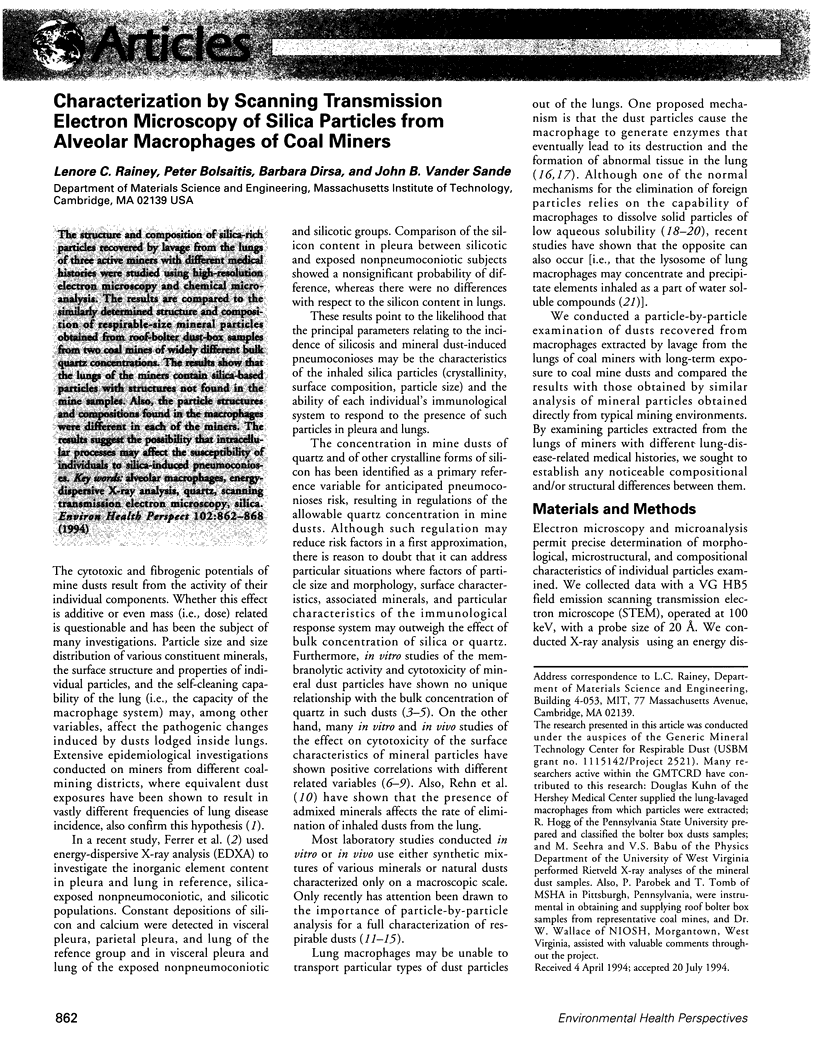
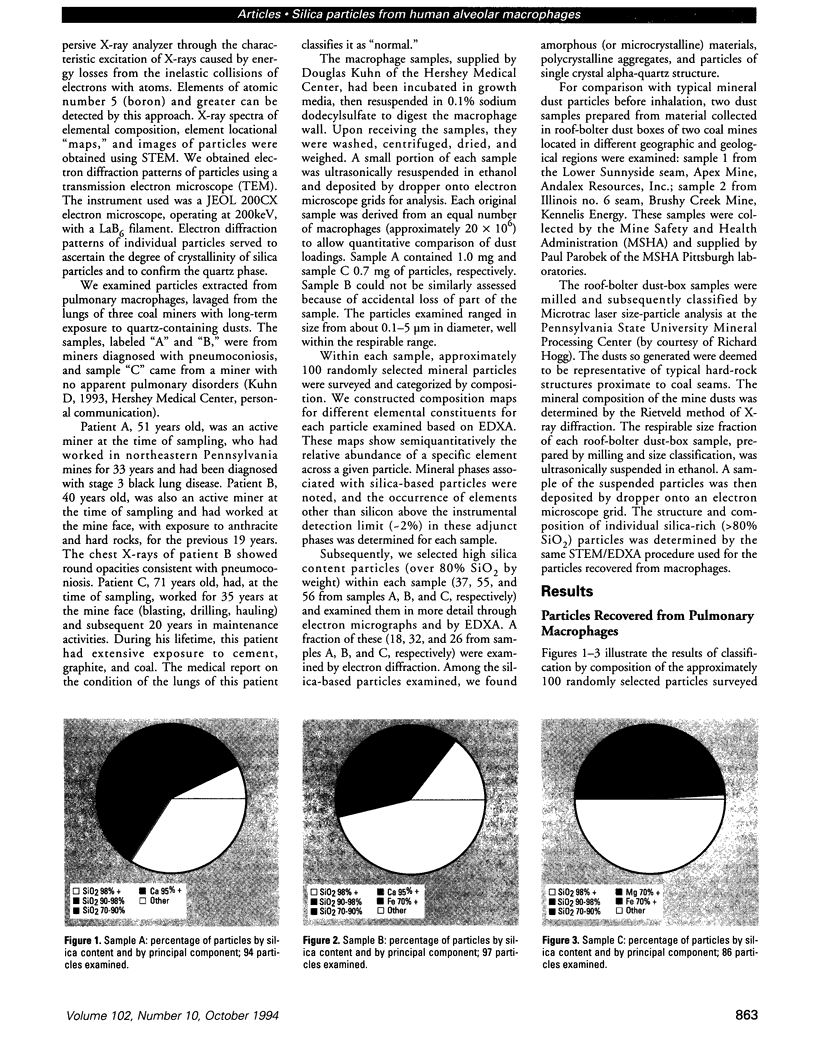
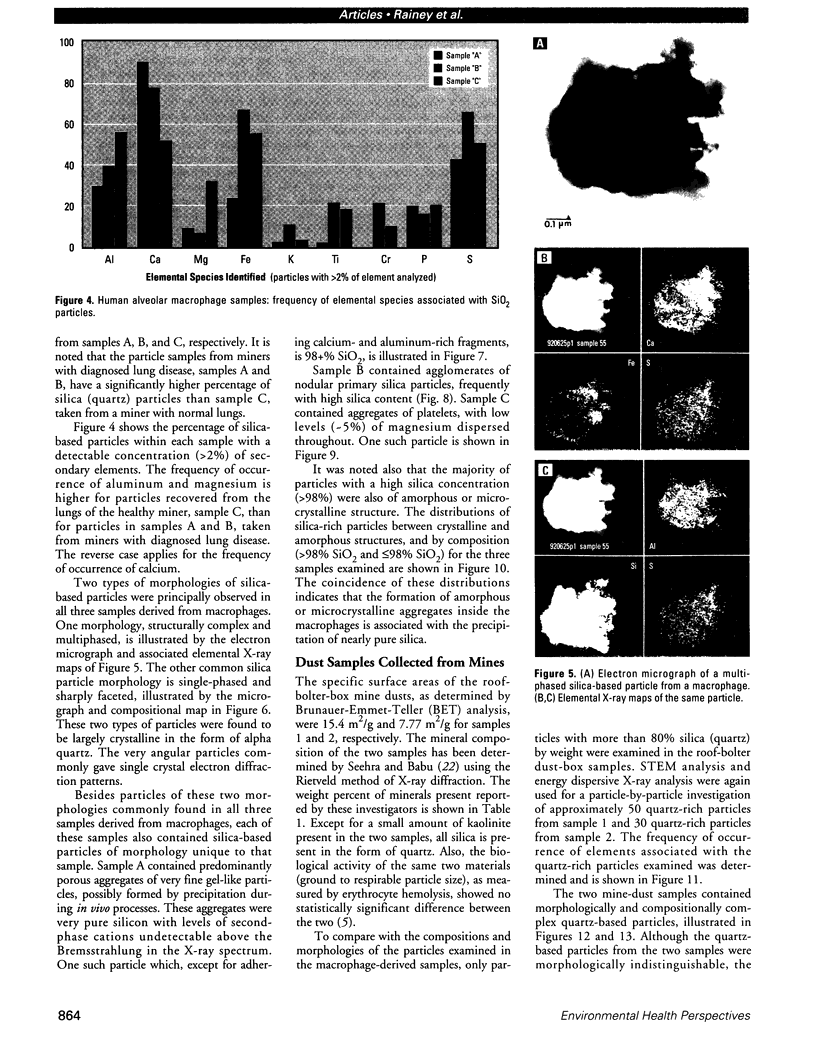
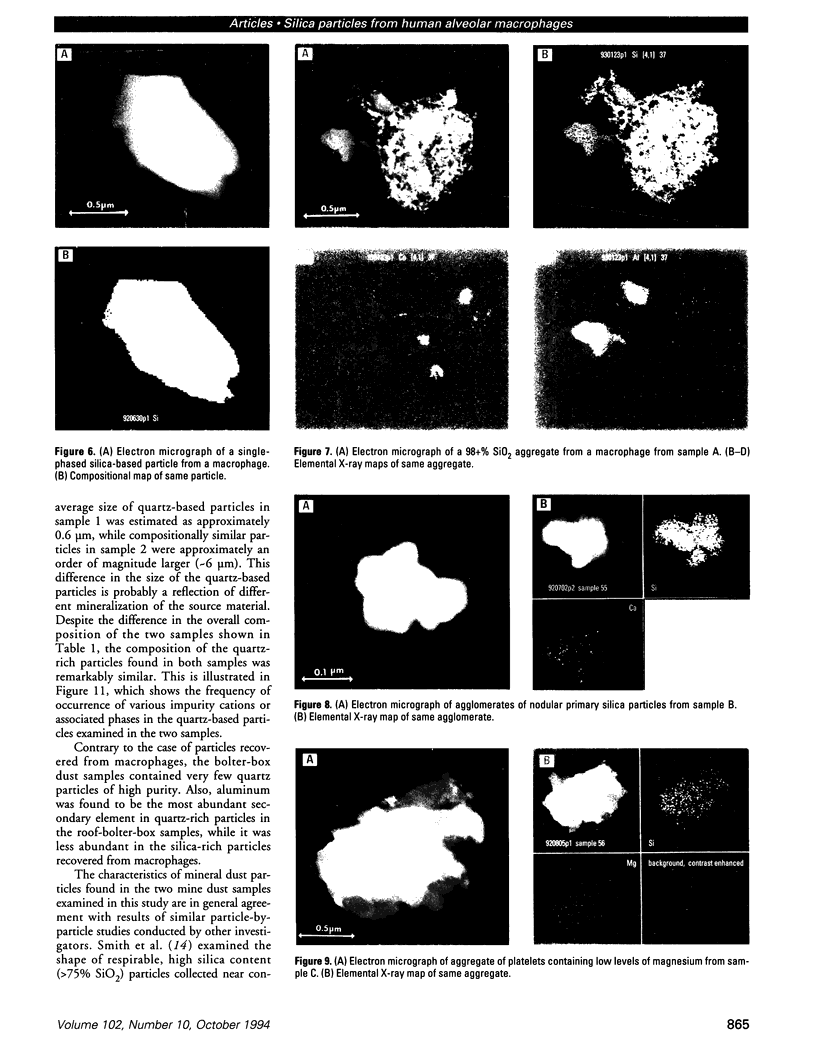
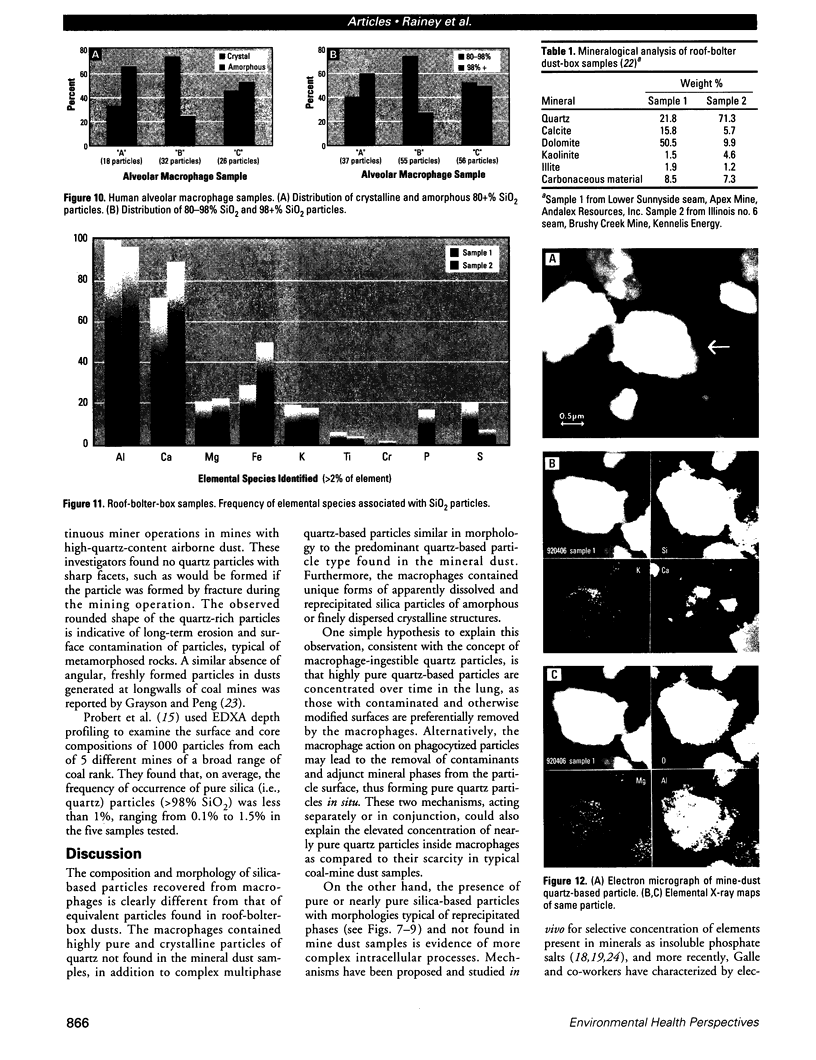
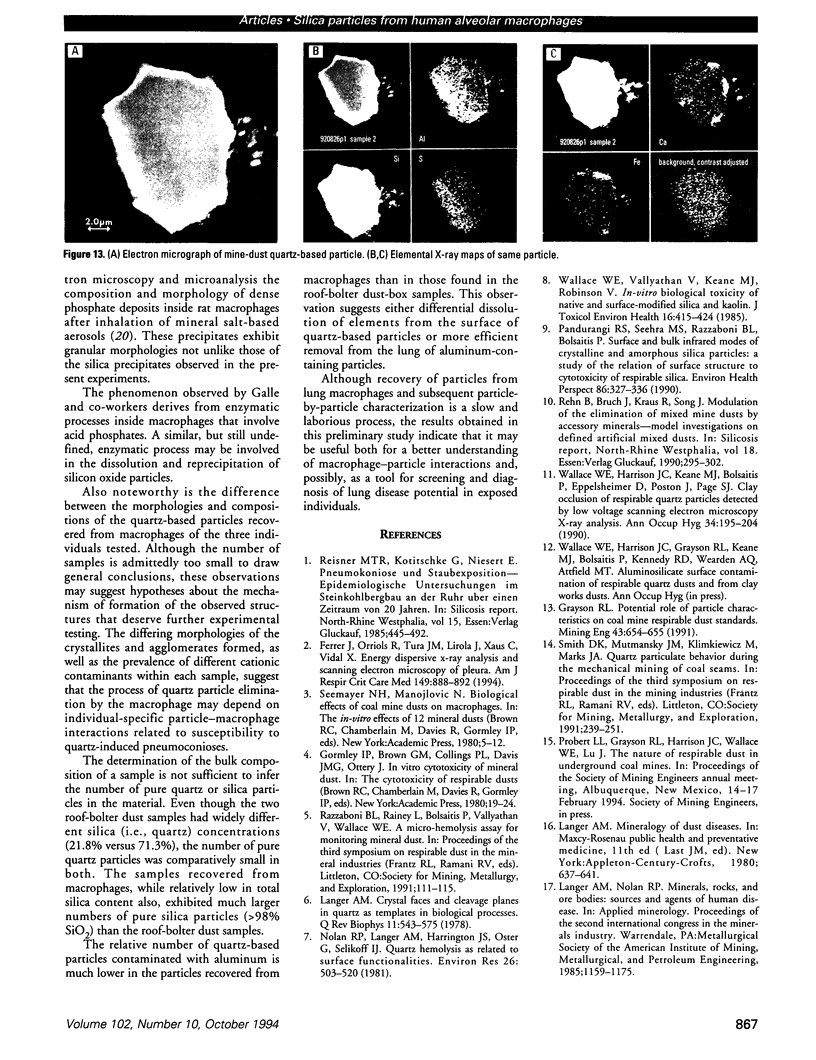
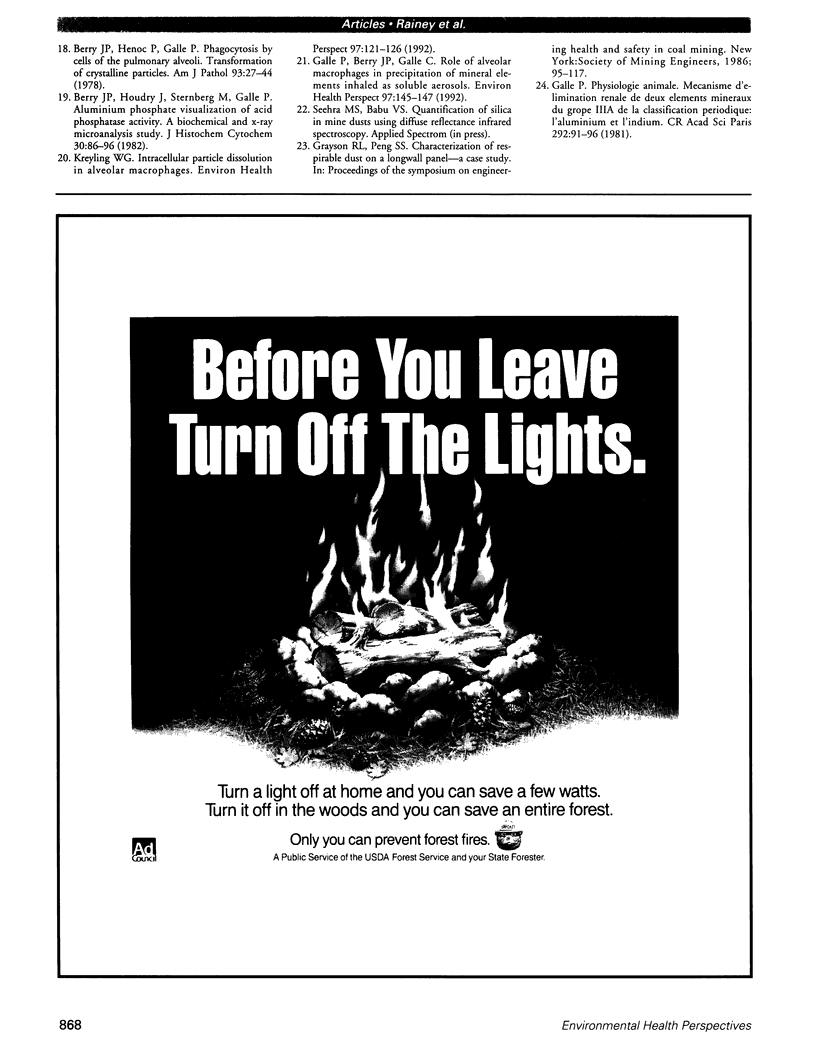
Images in this article
Selected References
These references are in PubMed. This may not be the complete list of references from this article.
- Berry J. P., Henoc P., Galle P. Phagocytosis by cells of the pulmonary alveoli. Transformation of crystalline particles. Am J Pathol. 1978 Oct;93(1):27–44. [PMC free article] [PubMed] [Google Scholar]
- Berry J. P., Hourdry J., Sternberg M., Galle P. Aluminum phosphate visualisation of acid phosphatase activity: a biochemical and x-ray microanalysis study. J Histochem Cytochem. 1982 Jan;30(1):86–90. doi: 10.1177/30.1.7054274. [DOI] [PubMed] [Google Scholar]
- Ferrer J., Orriols R., Tura J. M., Lirola J., Xaus C., Vidal X. Energy-dispersive X-ray analysis and scanning electron microscopy of pleura. Study of reference, exposed non-pneumoconiotic, and silicotic populations. Am J Respir Crit Care Med. 1994 Apr;149(4 Pt 1):888–892. doi: 10.1164/ajrccm.149.4.8143051. [DOI] [PubMed] [Google Scholar]
- Galle P., Berry J. P., Galle C. Role of alveolar macrophages in precipitation of mineral elements inhaled as soluble aerosols. Environ Health Perspect. 1992 Jul;97:145–147. doi: 10.1289/ehp.9297145. [DOI] [PMC free article] [PubMed] [Google Scholar]
- Galle P. Mécanisme d'élimination rénale de deux éléments du groupe IIIA de la classification périodique : l'aluminium et l'indium. C R Seances Acad Sci III. 1981 Jan 5;292(1):91–96. [PubMed] [Google Scholar]
- Kreyling W. G. Intracellular particle dissolution in alveolar macrophages. Environ Health Perspect. 1992 Jul;97:121–126. doi: 10.1289/ehp.9297121. [DOI] [PMC free article] [PubMed] [Google Scholar]
- Langer A. M. Crystal faces and cleavage planes in quartz as templates in biological processes. Q Rev Biophys. 1978 Nov;11(4):543–575. doi: 10.1017/s0033583500005667. [DOI] [PubMed] [Google Scholar]
- Nolan R. P., Langer A. M., Harington J. S., Oster G., Selikoff I. J. Quartz hemolysis as related to its surface functionalities. Environ Res. 1981 Dec;26(2):503–520. doi: 10.1016/0013-9351(81)90226-7. [DOI] [PubMed] [Google Scholar]
- Pandurangi R. S., Seehra M. S., Razzaboni B. L., Bolsaitis P. Surface and bulk infrared modes of crystalline and amorphous silica particles: a study of the relation of surface structure to cytotoxicity of respirable silica. Environ Health Perspect. 1990 Jun;86:327–336. doi: 10.1289/ehp.9086327. [DOI] [PMC free article] [PubMed] [Google Scholar]
- Wallace W. E., Harrison J., Keane M. J., Bolsaitis P., Eppelsheimer D., Poston J., Page S. J. Clay occlusion of respirable quartz particles detected by low voltage scanning electron microscopy-X-ray analysis. Ann Occup Hyg. 1990 Apr;34(2):195–204. doi: 10.1093/annhyg/34.2.195. [DOI] [PubMed] [Google Scholar]
- Wallace W. E., Jr, Vallyathan V., Keane M. J., Robinson V. In vitro biologic toxicity of native and surface-modified silica and kaolin. J Toxicol Environ Health. 1985;16(3-4):415–424. doi: 10.1080/15287398509530751. [DOI] [PubMed] [Google Scholar]





























